I heard from Andy Grove at Audio Note UK, and we had a nice email exchange about his design of the Oto Phono SE Signature integrated amplifier. I like Andy, it was a true pleasure to meet him while visiting Audio Note UK earlier this year, and as you will read about in a moment, Andy's quite the character!

Andy Grove, Audio Note UK Senior Engineer.
Andy told me, "As I said, the Oto SE was my first properly commercial design, I was 23 at the time, and a bit naive and arrogant with it, not the graceful kung-fu master you see before you nowadays."
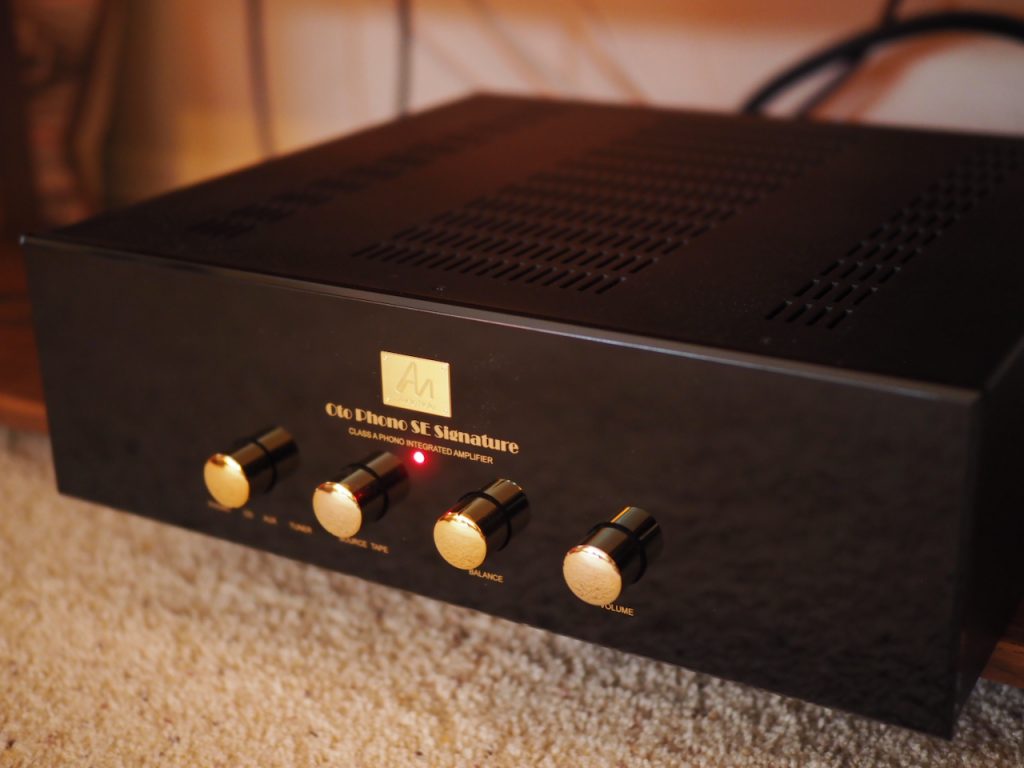
Audio Note UK Oto Phono SE Signature
"I'd been making audio stuff since I was a young teenager, much to the entertainment of my parents and neighbors. My other passions included getting in fights, heavy metal music, electric guitar, air rifles, pyrotechnics, and hot air balloons that had a habit of catching on fire and crash-landing in inappropriate places, so I was a popular young lad - or so it seemed, given the amount of people who came round asking to see me."
"I met Peter because I'd built a set of 211 amps, and I wanted him to hear them, and then, or shortly afterwards, he asked me to design a single-ended EL84 amplifier - which I did."
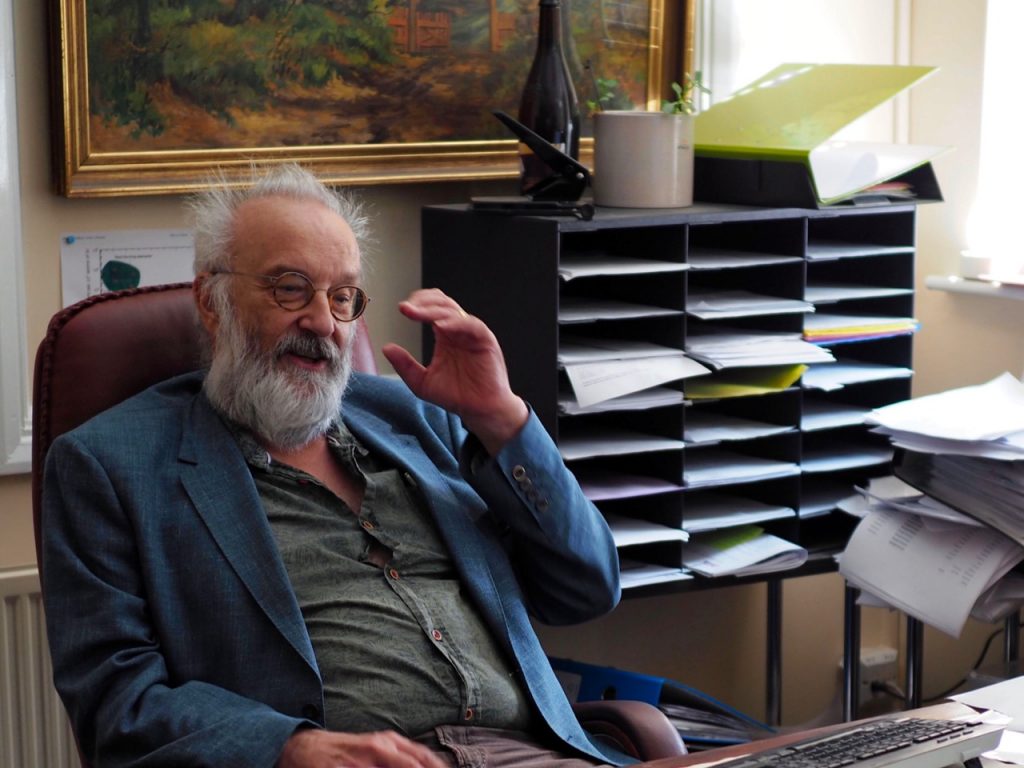
Peter Qvortrup of Audio Note UK.
"The concept I had was, if possible, to use only a single stage of gain, and then to the output valves. There is one thing you learn quickly and that's simplicity sounds good, even if the route to get there is complex. Furthermore, with only one gain stage, amplifier stability was more or less guaranteed, and that has a strong effect on how an amplifier sounds as well."

Inside the Audio Note UK Oto Phono SE Signature
The Oto was more like something that happened; I looked at various different options, and the ECC83 / 12AX7 to EL84s way of doing it had a golden light shining on it through a crack in the clouds, there was no other choice really, so I can't tell you I meditated for days, or conducted a lot of research. As soon as I drew the schematic I knew it would work."
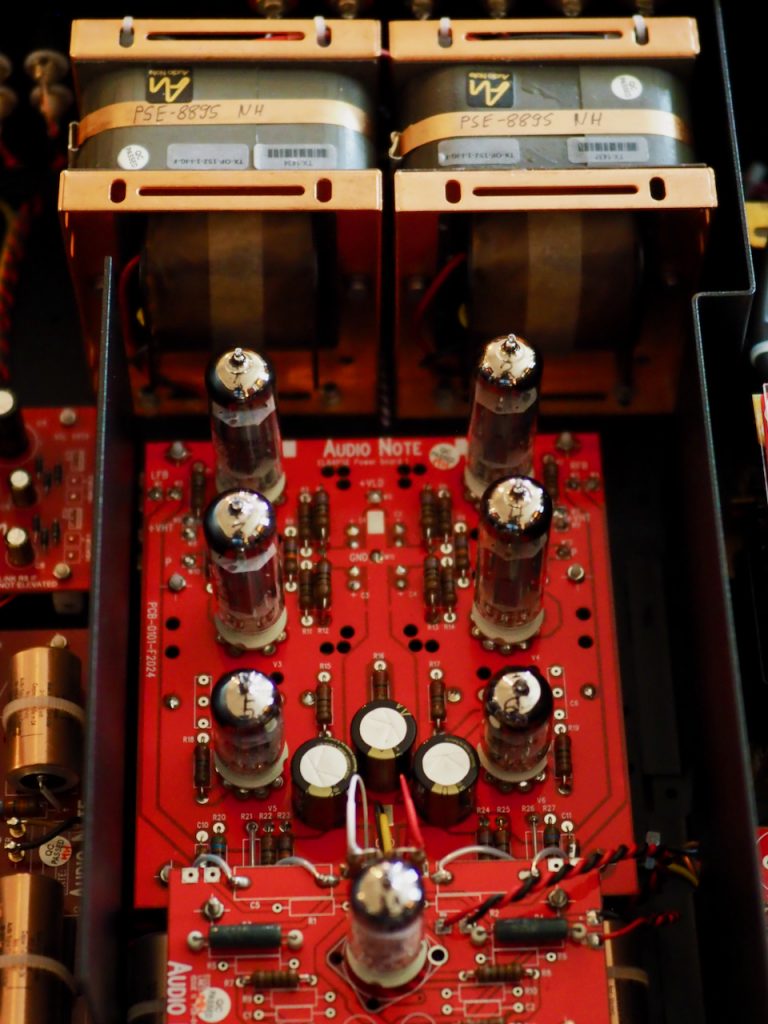
"... power amp part of it ..."
"The Oto SE, or rather the power amp part of it, was the first (successful) project I did for Peter and Audio Note, roughly 27-28 years ago (1991). The formula remained virtually unchanged, with a few tweaks and updates here and there, until, just recently, we created the Signature version of it, which incorporates our most current concepts and components."
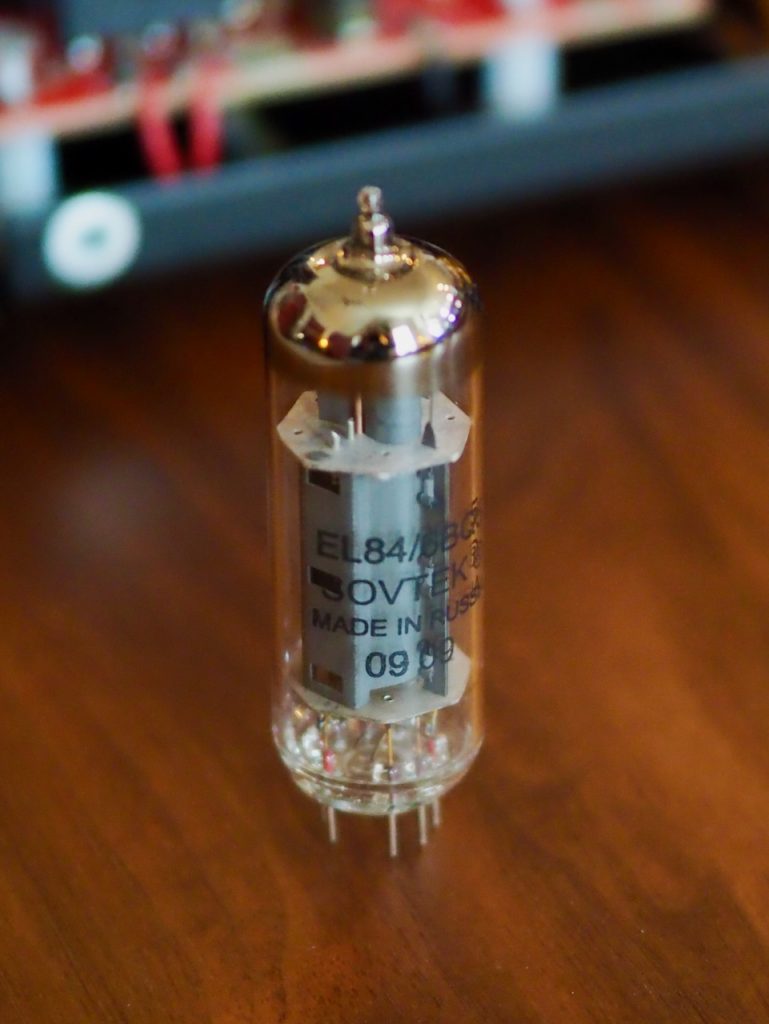
Four Sovtek EL84's are used in a parallel-single-ended-pentode circuit in the Oto Phono SE Signature.
"In the Oto SE's engine room are two pairs of EL84 power pentodes, one pair per channel (four pieces in total), in parallel single-ended mode. Each each pair is driven by an ECC83 (12AX7) double triode in SRPP (Shunt Regulated Push Pull) configuration in which one triode is the amplifier, and the other an active load. The EL84 power is transferred to the speaker load by a large output transformer, and there is a moderate amount of feedback taken from the secondary to provide adequate damping to the speaker."
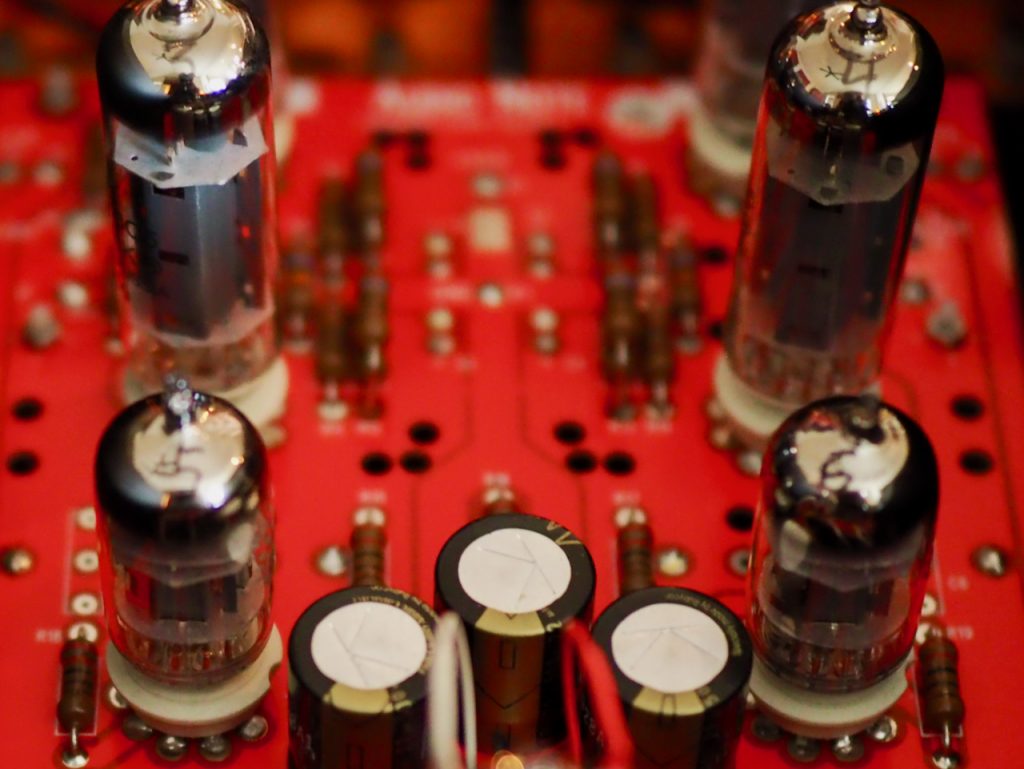
Psvane 12AX7 vacuum tubes are the bottom 2 tubes in the photo.

Psvane 12AX7 driver tubes.
"The phono version has an additional line stage, using an ECC82 (12AU7), and the phono stage itself, which is comprised of an ECC83 and a ECC88 (6DJ8), the phono stage is zero feedback, with a RC passive RIAA EQ network."
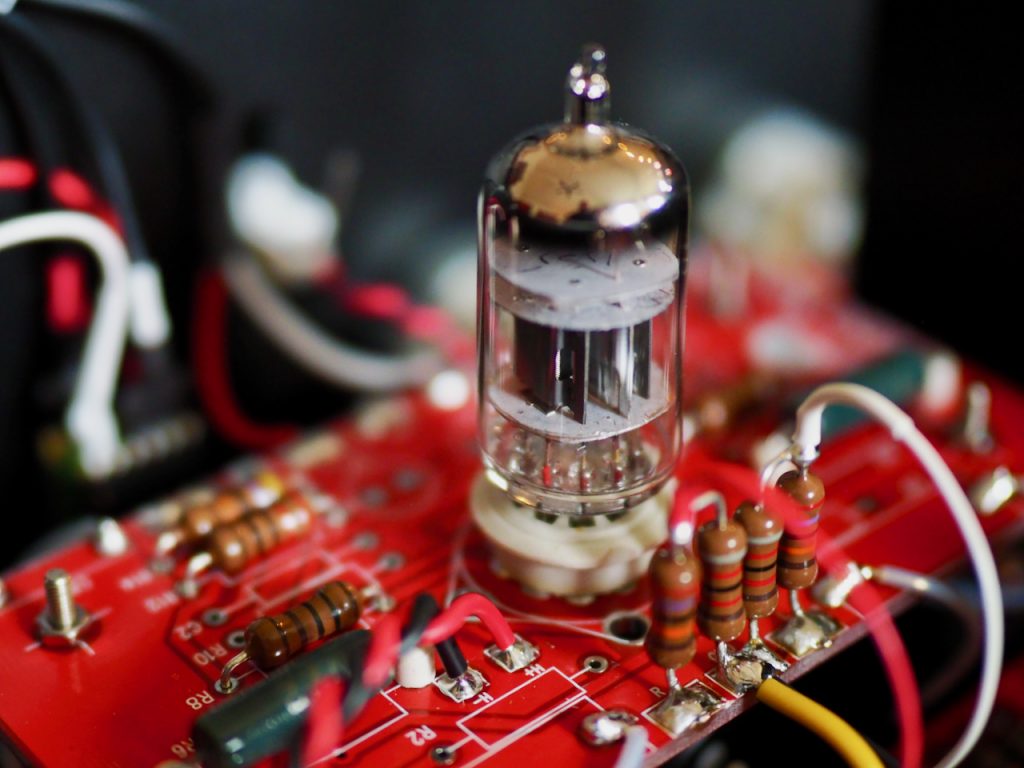
"The phono version has an additional line stage, using an ECC82 (12AU7) ..."
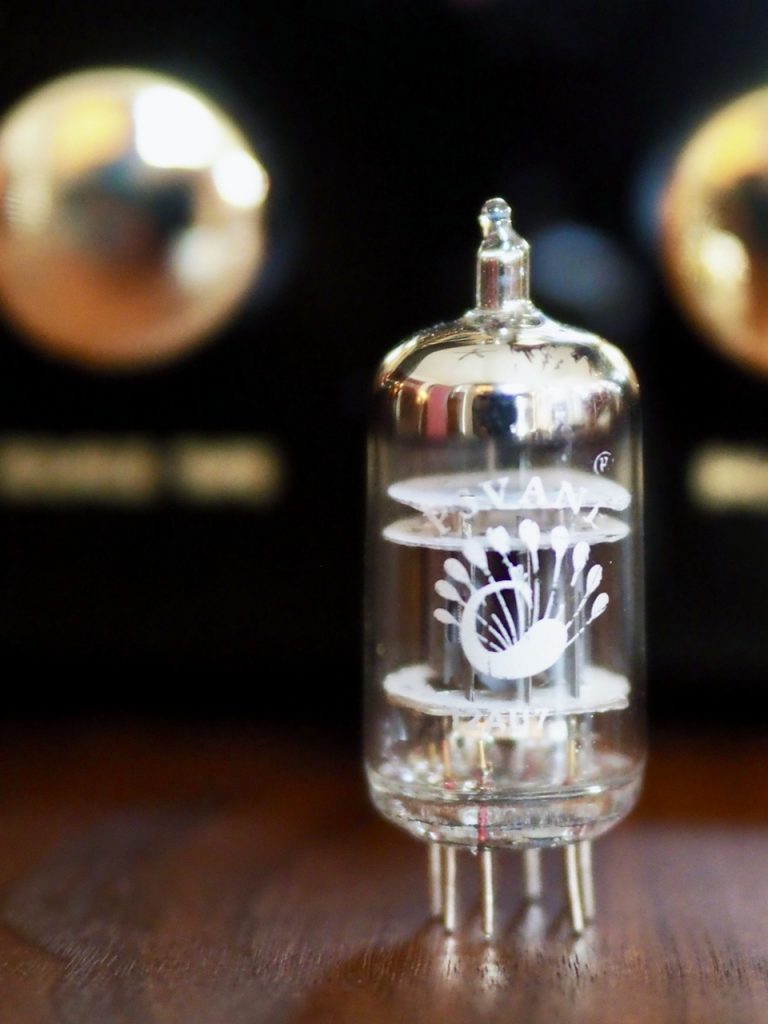
Psvane 12AU7 in phono line stage.
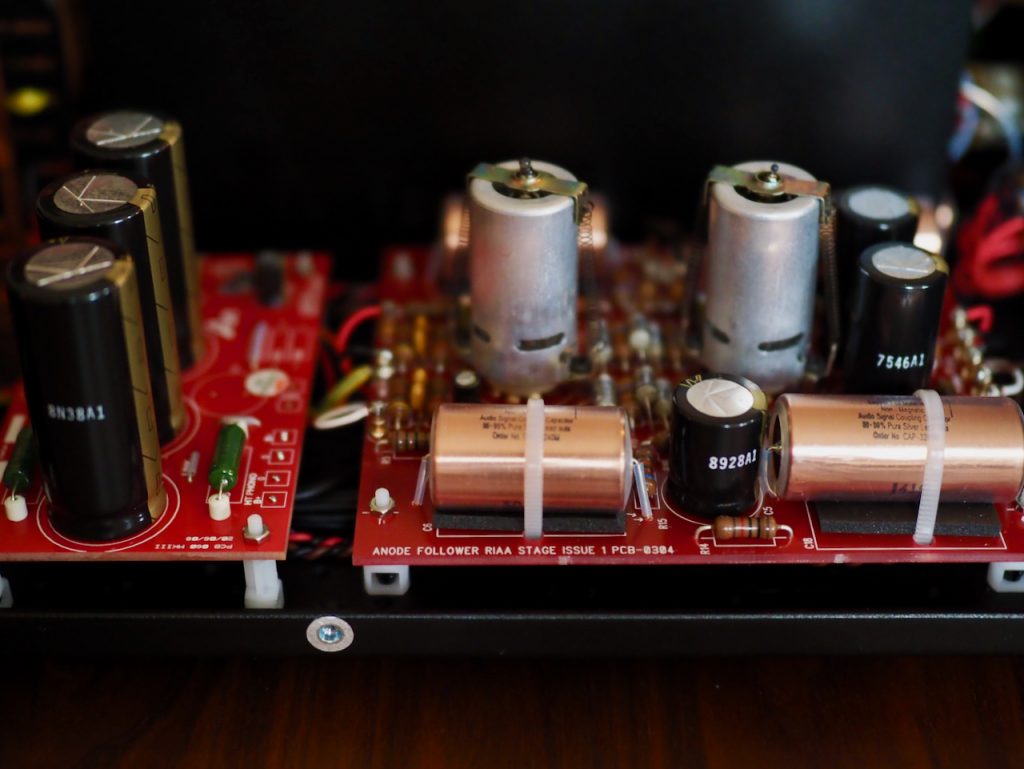
Oto phono stage.
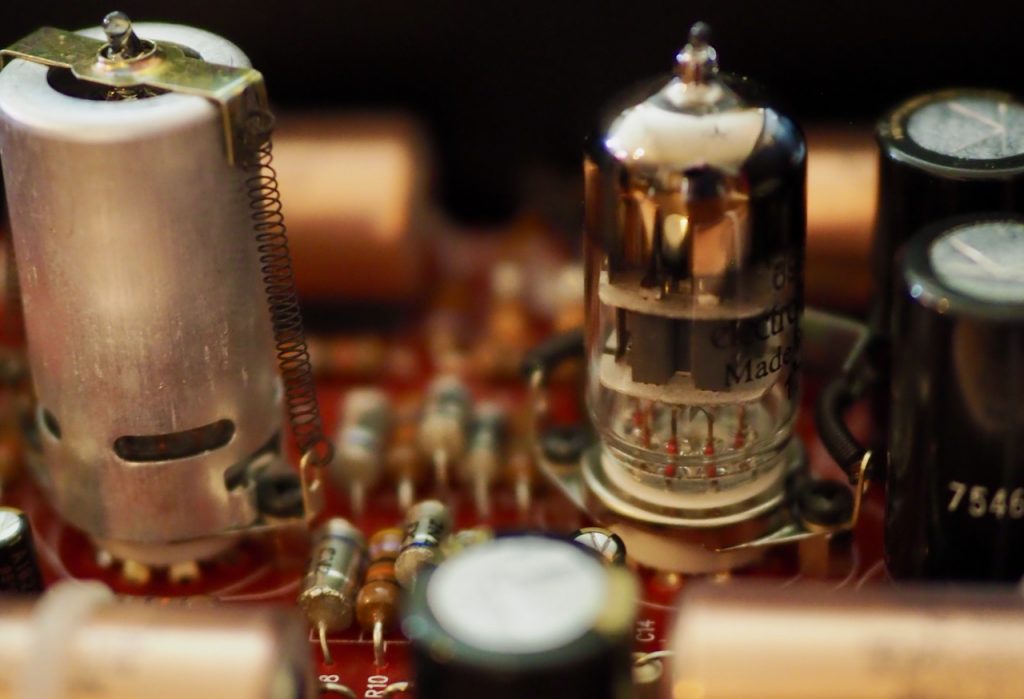
Electro-Harmonix 6922 in the phono stage.
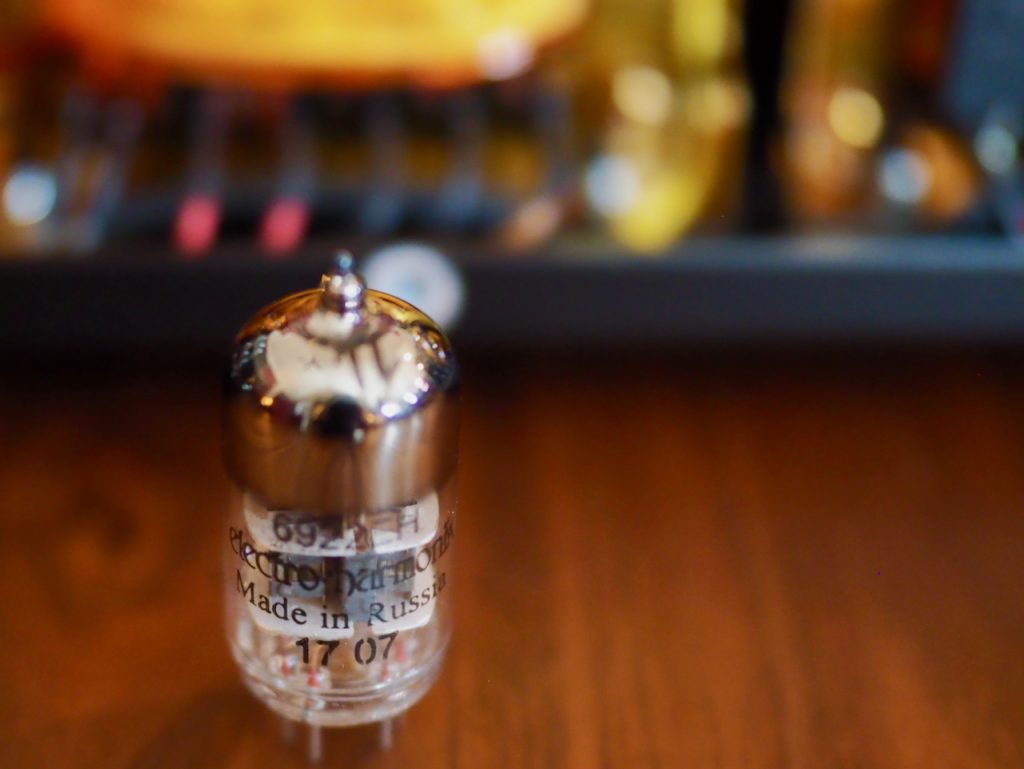
Electro-Harmonix 6922 in the phono stage.
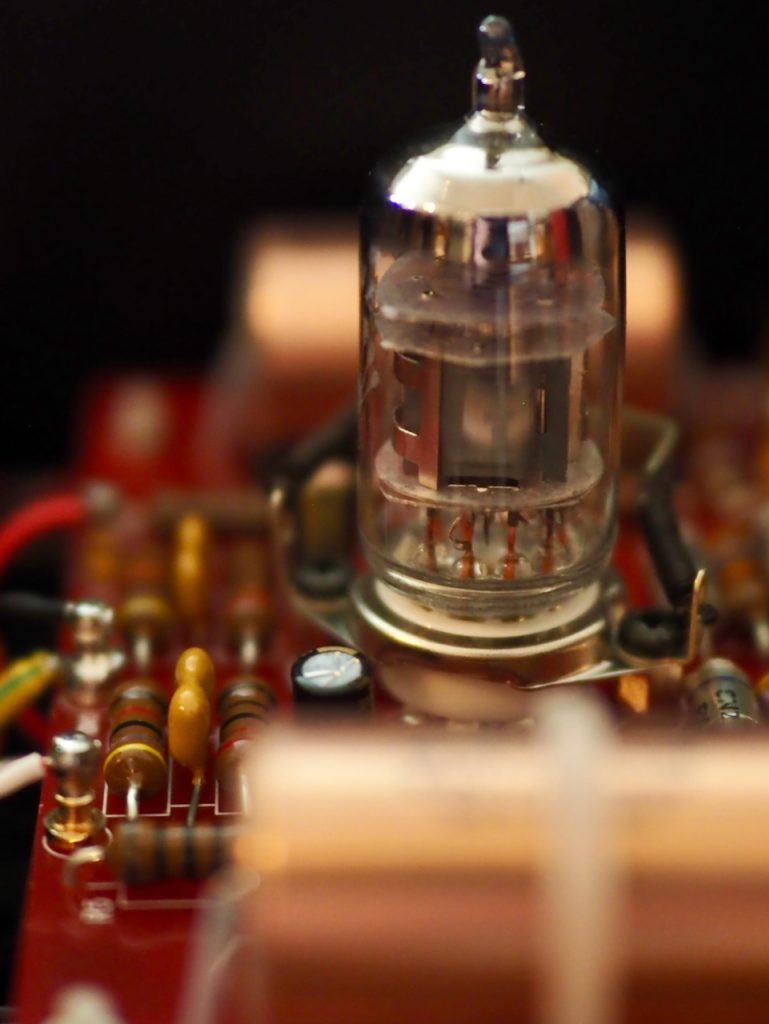
Psvane 12AX7 in the phono stage.
"The power supply is fairly straightforward, with rectification performed by silicon diodes, with conventional RC filtration."
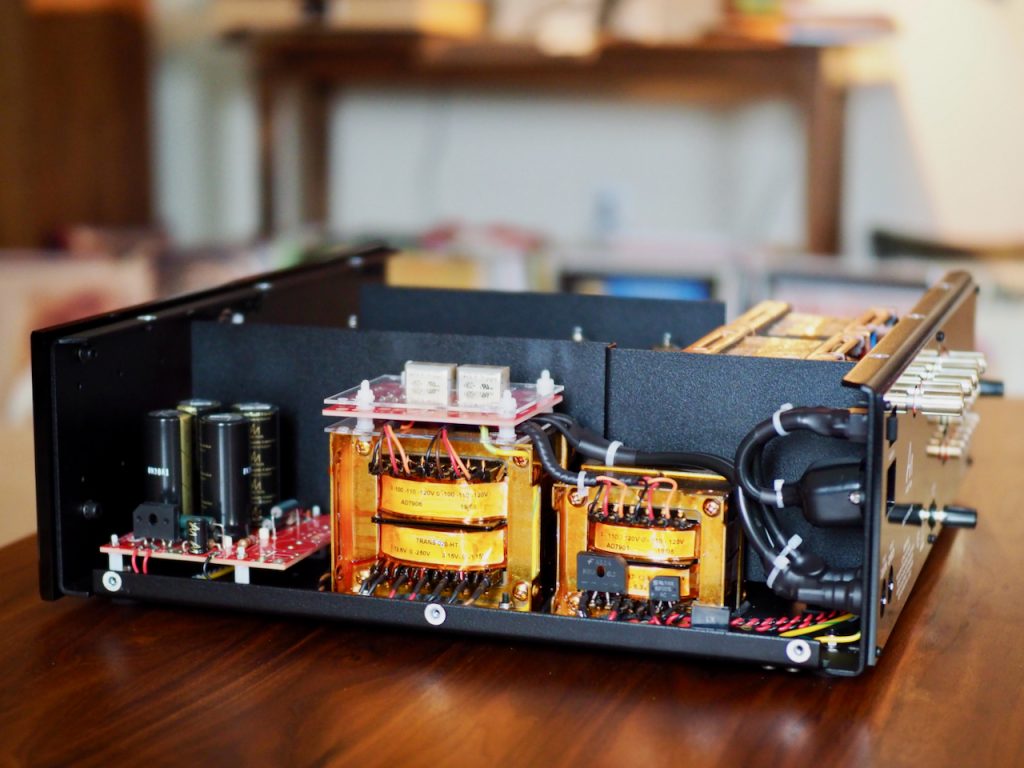
That's the Oto's power supply in the photo above. The transformer on the left is the mains transformer for the amplifier, the one on the right is the dedicated mains transformer for the phono stage. Thanks to Alex for asking the clarifying question, and to Andy for providing the answer!
"The 'plain vanilla' version uses our well known combination of Beyschlag resistors, Rubycon, BC and similar 'standard' type electrolytic capacitors, ERO mylar coupling capacitors, and the transformers are cored with silicon steel laminations."
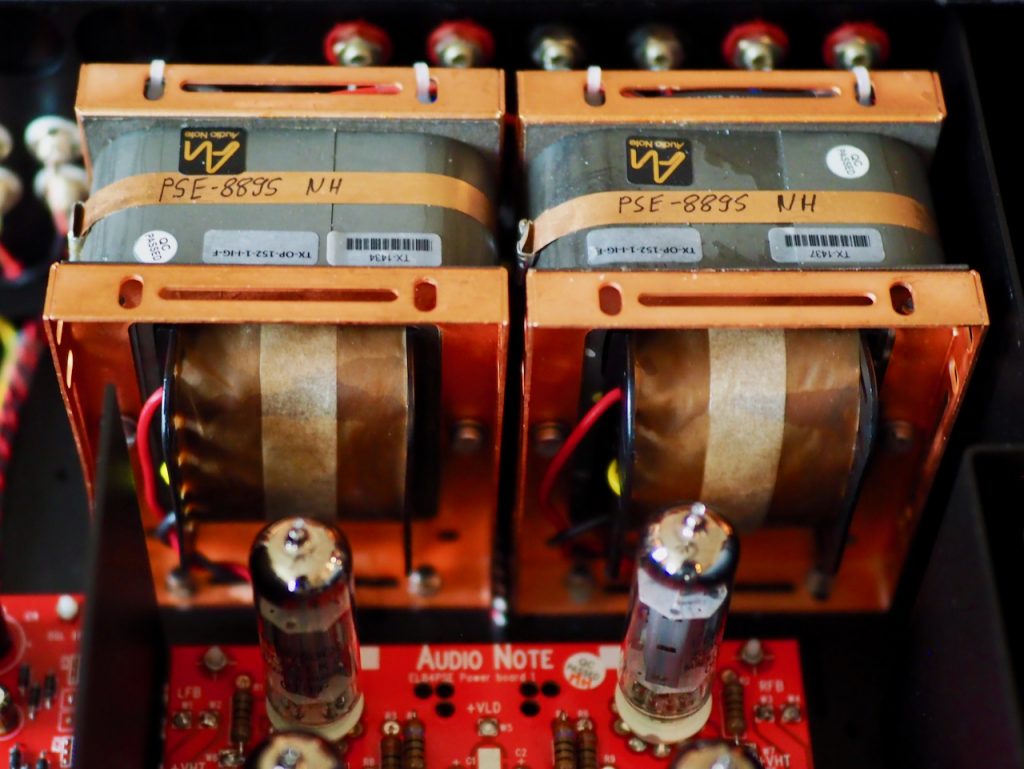
Oto output transformers.
"The Signature version is the same architecture, but with a selection of tantalum resistors, Kaisei capacitors, and an output transformer which is cored with HiB silicon steel C Cores and specially impregnated and coated."
Many thanks to Andy for a nice description of the Audio Note UK Oto Phono SE Signature integrated amplifier.
Here's a few more photos from different angles for your viewing enjoyment.
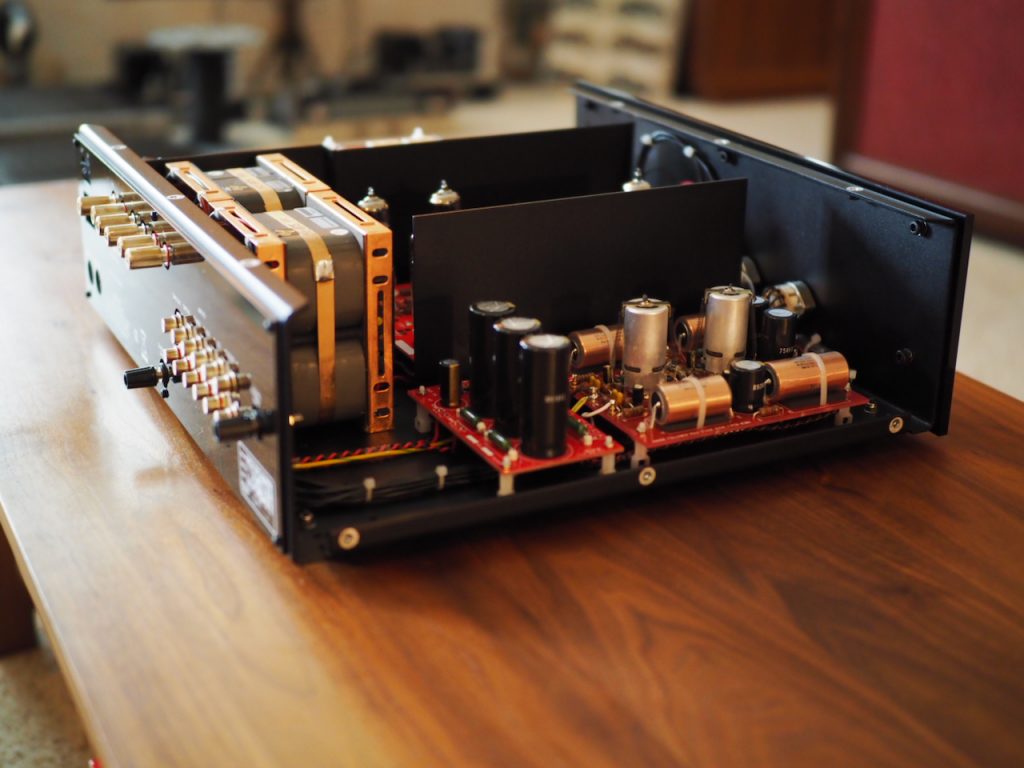
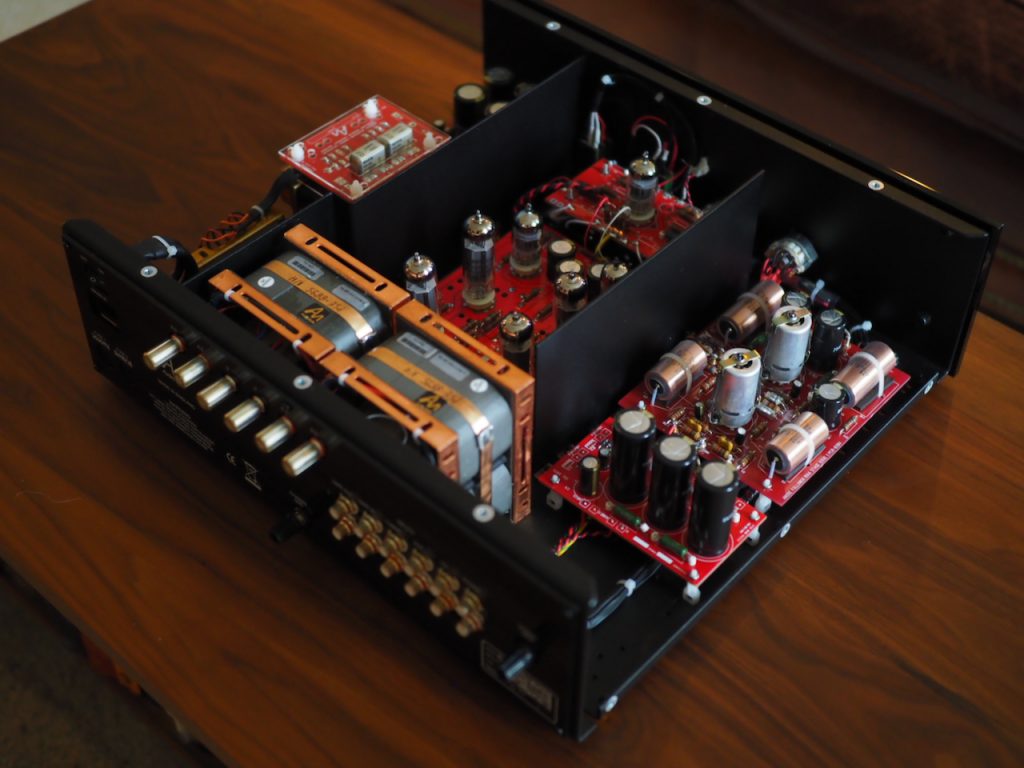


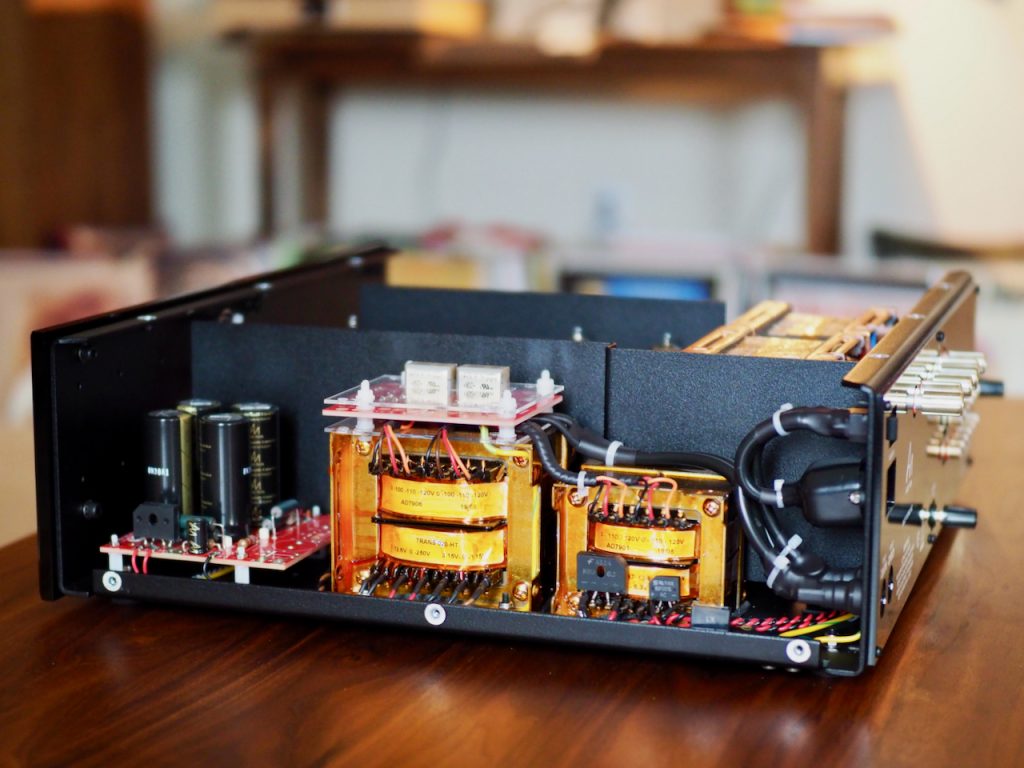
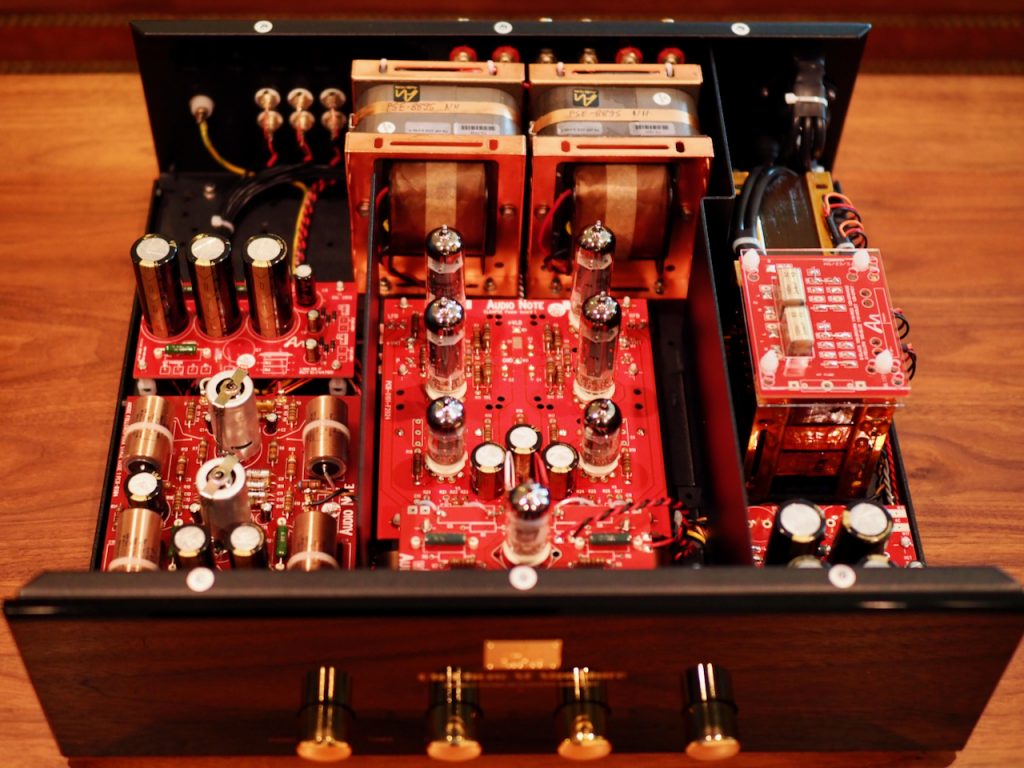

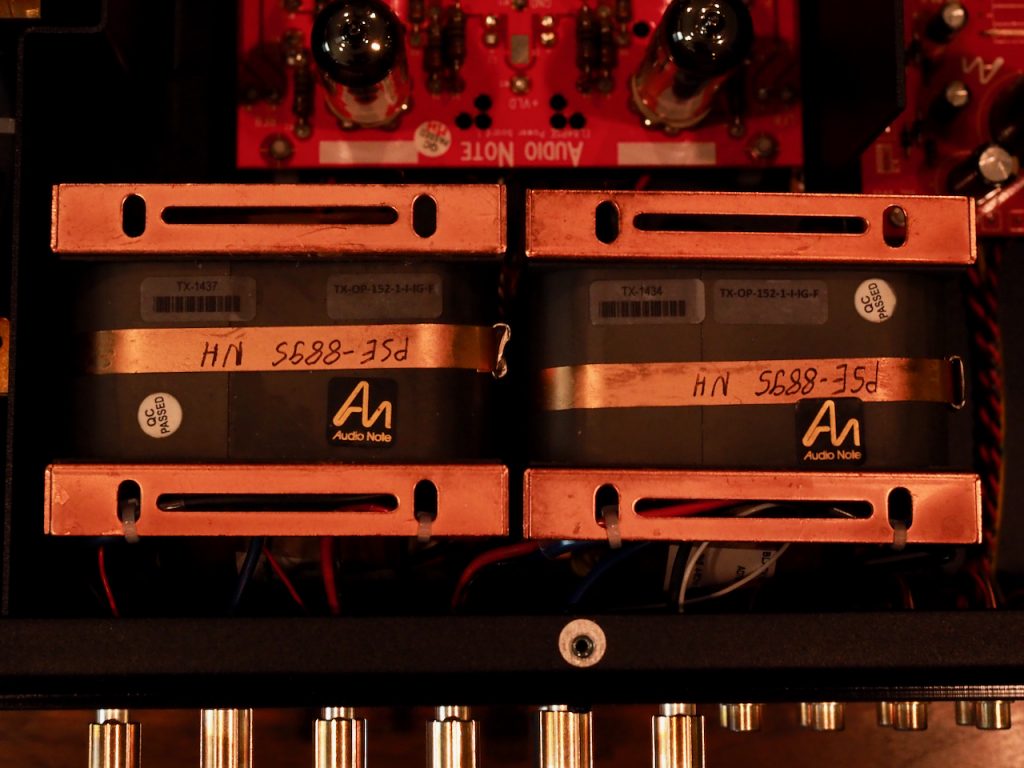
As always, thanks for stopping by, and may the tone be with you.
P.S. In response to this post I got a nice message from mastering engineer - and man of many talents, Steve Hoffman - that said, "I use an Audio Note (UK) Ltd Oto Phono SE Signature in my studio. It's amazing, especially for the money, a really nice EL-84 unit that does it all." and "The OTO has everything I need in the studio, phono section, tape/EQ loop, everything."
Stay tuned for the upcoming feature review of the Audio Note UK Oto Phono SE Signature integrated amplifier in an upcoming issue of Positive Feedback!



























